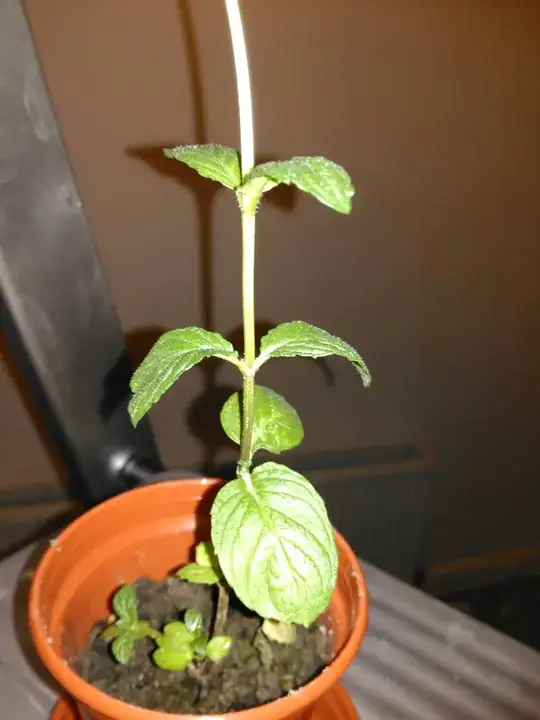We have moved in to a new home and the flower bed is overrun with what looks and smells like mint.

Am I correct in assuming this is an edible mint plant which can be used in cooking?
We have moved in to a new home and the flower bed is overrun with what looks and smells like mint.

Am I correct in assuming this is an edible mint plant which can be used in cooking?
If you really want to try to figure out if it is edible or not, you could try this method: How to Test if a Plant Is Edible (Although in some people even edible mints can cause contact dermatitis (via wikipedia))
However; also from wikipedia, i believe the poisonous variety mentioned in the comments is mint variety Perilla frutescens - Which while it appears it is not poisonous to humans, it is toxic to cattle & horses.
All that said, I'd say go for it & enjoy some mint! (In small quantities at first, by perhaps just chewing the leaf for a bit & spitting it out.)
The plant in your picture doesn't look anything like typical mint (Mentha sylvestris varieties); this link shows a typical mint leaf
http://pantrygardenherbs.com/shop-for-organic-herbs/mint-varieties/mint-julep-4/
That doesn't mean it isn't a form of mint, but its certainly not one I recognise - those tiny, short hairs all over the surface of the leaf and on the base of the leaf stems I've never seen on any variety of mint, though there is supposed to be a variety with some short hairs, just not quite so noticeable as these are. The leaf shape's not typical of mint either, and there's none of the typical crunkled appearance on the leaf surface - but the leaves are opposite and in pairs, which is typical of mint. Can't tell if the stem is square, looks like it might be. The trouble with mint is, there are many varieties which look somewhat different - three illustrated here
https://www.plantvillage.org/en/topics/mint/infos/diseases_and_pests_description_uses_propagation
and your plant looks somewhat etiolated, so there are large gaps up the stem between leaves, not something you'd see in mint usually, although its possible that's a result of low light conditions indoors.
Unless anyone else ID's it as mint for sure, I'd not risk using it - what would be helpful to see is a photo of it growing outdoors so we can see how its growing in the ground, but I'm guessing that's not an option now its so late in the year. Also, have you ever seen it flower, and if so, what were the flowers like?'
It may be Mentha arvensis though, wild mint, but that usually has brown streaking on the stems, slightly less round leaves and short, fine hairs on the edges of the leaves as well as the leaf surface:
https://gobotany.newenglandwild.org/species/mentha/arvensis/
It sure looks like a mint to me. Square stem, smells like mint = mint. But it's really not possible to go beyond that without more. Leaves are notoriously variable in mints. You would need the flowers. Some cultivars nearly never flower though. So one of the best ways to distinguish mints is aroma. Get some mint that you know - spearmint and peppermint, for instance, and compare. If it's really like spearmint, I would not worry and use it. Pennyroyal, also a mint, has a distinctly different aroma as well, more menthol and almost a wintergreen aroma. Pennyroyal is much shorter ( foot or less minus the flowering stems) than the other mints, more of a ground-cover, while the other mints are usually taller (to 2 feet or more). Pennyroyal is the only problematic mint in having some toxic components, but in small amounts it's pretty safe. It's the extracted oil that is the problem, and you need a huge number of plants to get a little oil. The fresh herb is about %1 oil. https://www.botanical.com/botanical/mgmh/p/pennyr23.html - this reference contains a lot of folklore but I think this part is pretty accurate as I used to live near mint farmers who extracted the oil.
OK, to put it in an answer format:
https://en.wikipedia.org/wiki/Mentha_pulegium https://en.wikipedia.org/wiki/Hedeoma_pulegioides
are the two best known members of the "mint" family that are downright medicinal/poisonous. At least the first is known to cross pollinate readily with edible mints, yielding new varieties that might or might not inherit the poisonous traits.
So if the species of mint cannot be positively identified - eg by an experienced gardener or botanist, or because the plant is still the same generation as it was intentionally planted as -, consider it unsafe.
It looks like Apple mint, I have some in my property too. They don't grow bushes, they grow long shoots. If you can find a forest nearby they can identify it. But there are also phone apps that can tell you